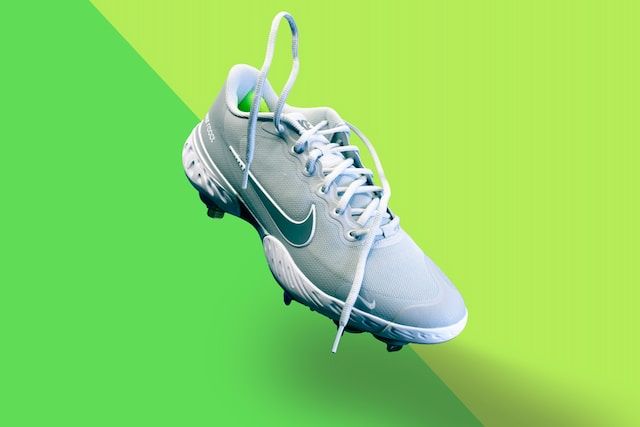Catalog printing has been a proven marketing tool for years. However, with the advent of digital marketing, many businesses have shifted their focus toward online promotion. This has resulted in an overcrowded online space, making it harder for businesses to stand out. As a result, many businesses are now realizing the importance of high-end professional catalog printing again to build customer loyalty and retention. In this article, we will discuss how to use high-end catalog printing to achieve this goal.

How to Use High-End Catalog Printing to Build Customer Loyalty and Retention?
Why is Catalog Printing Still Relevant?
Despite the growing popularity of digital marketing, catalog printing is still a relevant and effective marketing tool. Here are some reasons why:
Tangibility: A catalog is a physical item that customers can hold and interact with. This tactile experience is something that digital marketing cannot replicate. Having a tangible product creates a stronger connection between the customer and the brand.
Attention: A well-designed catalog can capture the attention of the customer and keep them engaged for a longer period of time. This is because catalogs are designed to be visually appealing and can showcase products in a way that online marketing cannot.
Convenience: Catalogs can be read anywhere, anytime. They don't require an internet connection or a specific device, making them convenient for customers who may not always have access to digital devices.
Personalization: Catalogs can be personalized to suit the specific needs of the customer. This personal touch can create a stronger bond between the customer and the brand.
Tips to Use Catalog Printing to Build Customer Loyalty and Retention
Step 1: Identify Your Target Audience
The first step in creating a high-end professional catalog is to identify your target audience. Who are you creating the catalog for? What are their interests, needs, and preferences? Understanding your target audience is crucial in creating a catalog that resonates with them.
For example, if your target audience is young adults, your catalog design should be modern, edgy, and colorful. If your target audience is professionals, your catalog design should be sleek, sophisticated, and minimalist. Understanding your target audience will help you create a catalog that speaks directly to them.
Step 2: Design a Catalog with High-End Professionalism
Once you have identified your target audience, the next step is to design a catalog that exudes high-end professionalism. Your catalog design should be visually appealing and showcase your products in the best possible light. Here are some tips for designing a high-end professional catalog:
Use high-quality images: The images in your catalog should be of high quality and showcase your products in the best possible light. Make sure that the images you use are clear, sharp, and visually appealing. Use multiple angles and perspectives to give customers a better idea of what the product looks like.
Use professional photography and retouching services to make your products look their best. At Color Consulting, we provide outstanding photo retouching and high quality catalog printing services to make your products stand out from the crowd.
Choose a high-quality paper stock: The paper stock you choose for your catalog can make a big difference in how it looks and feels. Choose a high-quality paper stock that is thick and sturdy.
Use a consistent color scheme: A consistent color scheme will help tie your catalog together and create a cohesive look. Use colors that complement your brand and appeal to your target audience.
Keep it simple: A cluttered catalog can be overwhelming and turn customers off. Keep your design simple and easy to navigate. Use whitespace to create breathing room and highlight important elements.
Make it interactive: A high-end professional catalog should be more than just a collection of images and descriptions. Incorporate interactive elements like QR codes or augmented reality to make your catalog more engaging.
Step 3: Showcase Your Products Features
The primary purpose of a catalog is to showcase your products. Therefore, it is essential to showcase the features of the products that make them stand out from the crowd. Here are some tips for doing so:
Use descriptive copy: In addition to high-quality images, use descriptive copy to provide more information about your products. This could include features, benefits, and specifications. Make sure the copy is clear and concise, and highlights the unique selling points of your product.
Group products logically: Grouping products together logically makes it easier for customers to find what they are looking for. For example, group products by category, price range, or season. This helps customers navigate the catalog more easily and find products that are relevant to them.
Highlight bestsellers: Highlighting your bestsellers is a great way to draw attention to your most popular products. This can be done through a separate section in the catalog or by using a special icon or badge to highlight them.
Show product comparisons: Showing product comparisons is a great way to help customers make informed decisions about their purchases. This could include comparing different models or versions of a product or comparing your product to competitors' products.
Step 4: Offer Incentives and Personalization
Offering incentives and personalization is a great way to build customer loyalty and retention. Here are some ideas:
Discounts and special offers: Offering discounts or special offers to customers who order from your catalog can encourage them to make a purchase. This could include free shipping, a percentage off the total order, or a free gift with purchase.
Personalized recommendations: Use customer data to provide personalized recommendations in your catalog. For example, if a customer has previously purchased a certain type of product, you could include similar products in their catalog.
Personalized cover letter: Include a personalized cover letter with each catalog. This could be a thank you letter for previous purchases, a discount offer, or a personalized message from the CEO.
Limited edition items: Including limited edition items in your catalog can create a sense of urgency and exclusivity. This could be a product that is only available for a limited time or a special edition product that is only available in the catalog.
Step 5: Follow up with Customers
Following up with customers after they have received your catalog is a great way to build customer loyalty and retention. Here are some ideas:
Send a thank you email: Send a thank you email to customers who have ordered from your catalog. This could include a personalized message from the CEO or a discount offer for future purchases.
Request feedback: Request feedback from customers on their experience with your catalog and products. This feedback can help you improve your catalog in the future.
Offer customer support: Make sure customers have access to customer support if they have any questions or issues with their orders. Providing excellent customer service can go a long way in building customer loyalty.
Send regular updates: Send regular updates to customers who have ordered from your catalog. This could include information about new products, sales, or special offers.
The Bottom Line
Professional catalog printing is still a relevant and effective marketing tool for building customer loyalty and retention. By following the steps outlined in this article, you can create a catalog that resonates with your target audience and showcases your products in the best possible light.
Not only catalogs can help you build strong relationships with your customers but also encourage them to become repeat customers. So, what are you waiting for? Get in touch with a professional catalog printing company in NYC, like Color Consulting, and get your catalog printed now!



